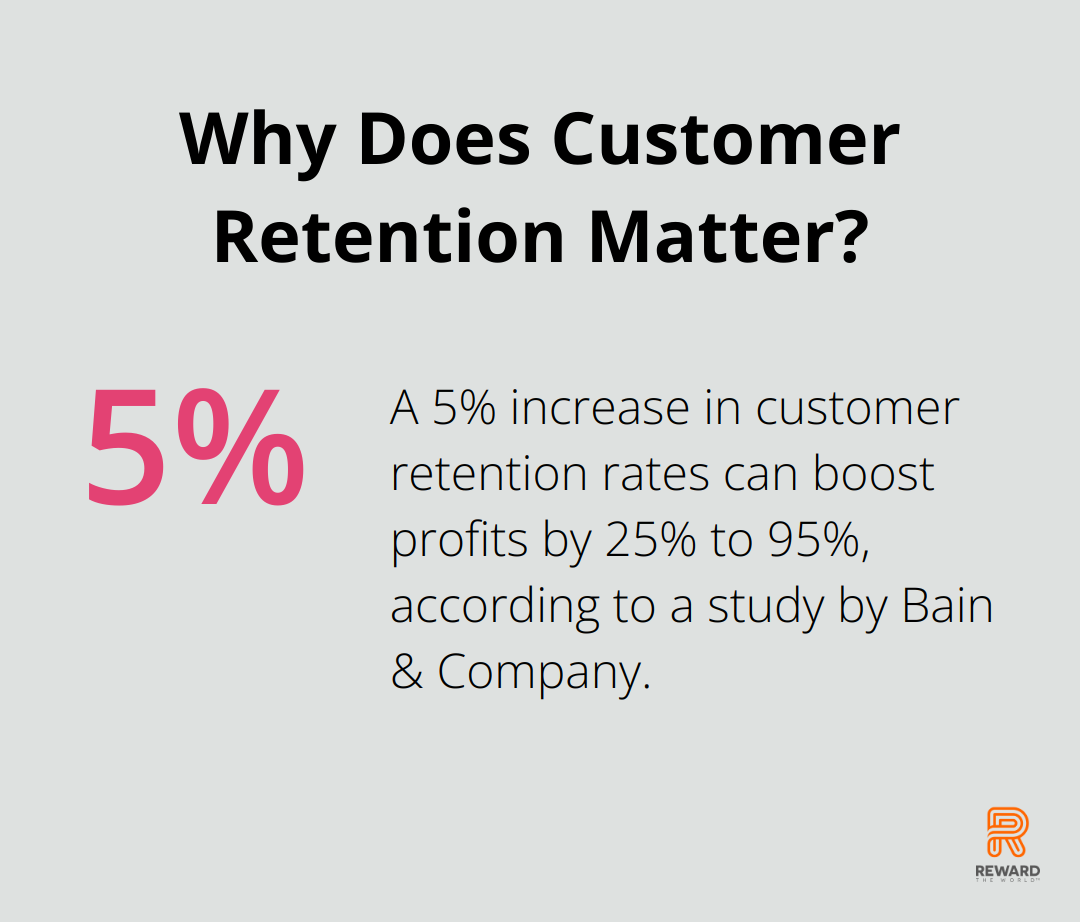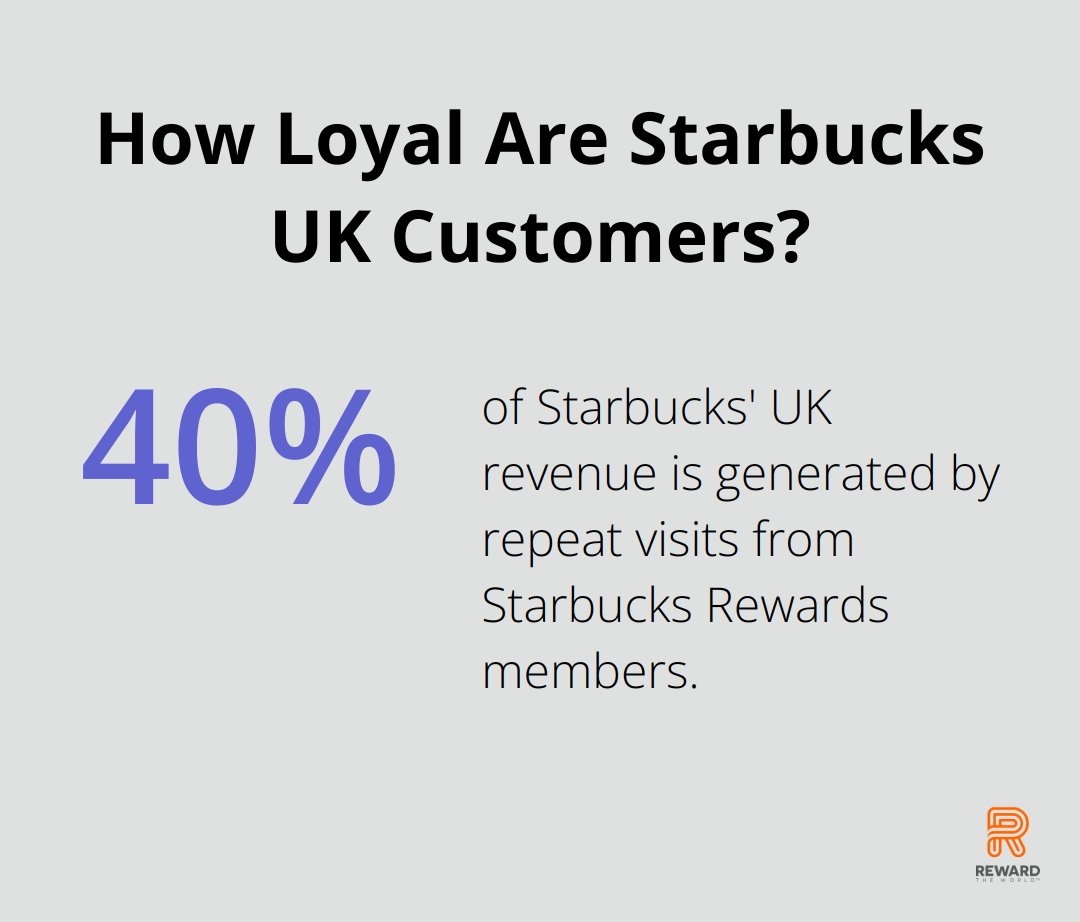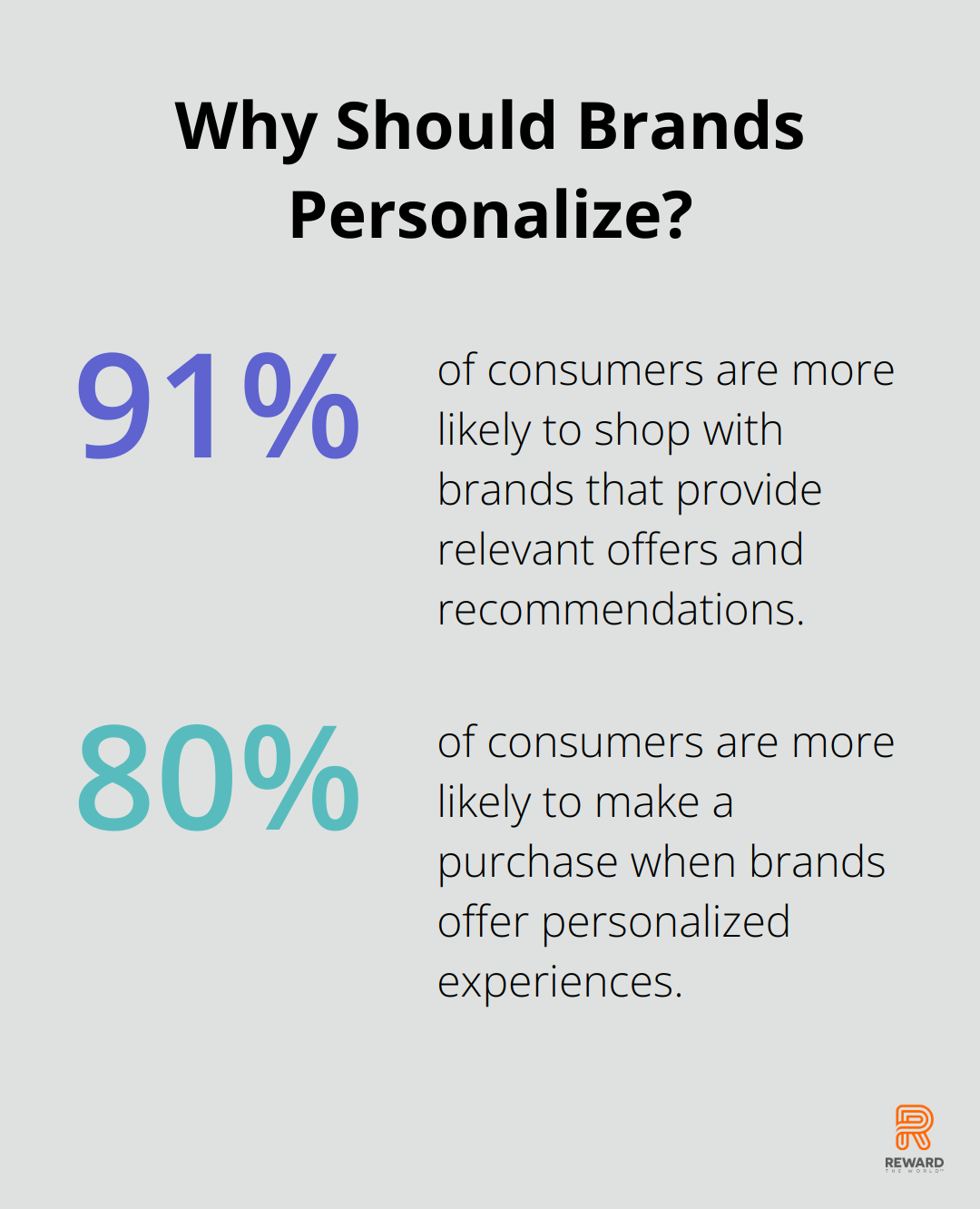
At Reward the World, we’re always exploring innovative ways to enhance customer relationships. Subscription loyalty programs have emerged as a powerful tool for businesses looking to boost their Customer Lifetime Value (CLV).
In this post, we’ll examine how recurring rewards can significantly impact CLV and provide practical strategies for implementation. We’ll also dive into real-world examples and data-driven insights to help you make informed decisions about your loyalty initiatives.
What Is Customer Lifetime Value?
Definition and Importance of CLV
Customer Lifetime Value (CLV) is a measure of the average customer’s revenue generated over their entire relationship with a company. This metric stands as a key indicator of business health. A study by Bain & Company reveals that a mere 5% increase in customer retention rates can boost profits by 25% to 95%. This stark difference underscores why businesses should maximize the value of existing customers rather than solely pursue new ones.
Key Factors Influencing CLV
Several elements shape CLV, and recognizing these can help businesses tailor their strategies effectively:
- Purchase frequency: The rate at which a customer buys from you.
- Average order value: The typical amount spent per transaction.
- Customer lifespan: The duration of the customer’s relationship with your brand.

A Harvard Business Review report found that customers with the best past experiences spend 140% more compared to those with the poorest past experiences. This fact highlights the importance of consistently positive interactions in driving CLV.
The Power of Data Analytics in CLV
To harness the full potential of CLV, businesses must analyze their customer data thoroughly. A survey by McKinsey revealed that companies using customer analytics comprehensively are 23 times more likely to outperform competitors in new customer acquisition and 9 times more likely in customer loyalty.
Businesses that utilize advanced analytics tools (like those offered by Reward the World) gain invaluable insights into customer behavior, allowing them to craft more targeted and effective loyalty strategies.
Long-Term Benefits of CLV Focus
A shift in focus to CLV can lead to substantial long-term gains. A study by Motista found that customers emotionally connected to brands have a 306% higher lifetime value (5.1 years) than satisfied customers (3.4 years). This statistic demonstrates the profound impact that building strong, lasting customer relationships can have on a business’s success.
CLV prioritization enables businesses to make more informed decisions about customer acquisition costs, retention strategies, and overall marketing efforts. As we explore further, we’ll examine how recurring rewards can serve as a powerful tool in boosting this essential metric.
How Recurring Rewards Drive Customer Behavior
The Psychology Behind Recurring Rewards
Recurring rewards transform customer loyalty. These ongoing incentives tap into fundamental human psychology, creating anticipation and excitement (similar to a child awaiting their weekly allowance). This anticipation keeps customers engaged and encourages repeat purchases.

Research contributes to a better understanding of the impact of retailing loyalty programmes on repeat purchase behaviour.
Effective Types of Recurring Rewards
Different recurring rewards appeal to various customer segments:
- Points-based systems: Customers earn points with each purchase, redeemable for discounts or products.
- Tiered programs: Higher spending unlocks better perks.
- Subscription-based rewards: Customers pay a fee for exclusive benefits and discounts.
- Cashback programs: Customers receive a percentage of their spending back as credit or cash.
Real-World Success Stories
Several companies have mastered recurring rewards:
Starbucks Rewards: This tiered program offers free drinks, personalized offers, and exclusive access to new products. Repeat visits from Starbucks Rewards members generates 40% of the brand’s UK revenue.
Amazon Prime: While not a traditional loyalty program, Prime’s subscription model offers recurring benefits like free shipping and streaming services. Prime members spend an average of $1,400 annually (compared to $600 for non-members).
Sephora Beauty Insider: This tiered program offers points for purchases, exclusive events, and early access to products. It boasts over 25 million loyal members.
Reward the World: Our platform offers a comprehensive solution for businesses looking to implement recurring rewards. With instant reward delivery and a vast selection of rewards, we provide a cost-effective alternative to traditional promotions.
Implementing Effective Recurring Rewards
To create a successful recurring rewards program:
- Make rewards attainable: Customers should earn rewards frequently enough to maintain engagement.
- Offer variety: Provide a range of reward options to appeal to different preferences.
- Personalize: Use data analytics to tailor rewards to individual customer behaviors.
- Communicate clearly: Ensure customers understand how to earn and redeem rewards.
The success of a recurring rewards program hinges on creating value for both the customer and the business. Meaningful, ongoing incentives significantly boost customer engagement, loyalty, and ultimately, lifetime value. In the next section, we’ll explore how to design and implement a recurring rewards strategy that maximizes CLV.
How to Implement Recurring Rewards
Design a Strategy Aligned with Customer Behavior
Analyze customer data to understand purchasing patterns, preferences, and pain points. Use this information to create a rewards structure that encourages desired behaviors. For example, if data shows customers tend to make purchases every two months, offer a bonus reward for those who shop monthly. This approach can increase purchase frequency and, consequently, CLV.

A study by Accenture found that 91% of consumers are more likely to shop with brands that provide relevant offers and recommendations. Ensure your rewards are genuinely valuable to your target audience.
Leverage Technology for Seamless Integration
Integrate your rewards program with your existing customer relationship management (CRM) system and point-of-sale (POS) platforms. This integration allows for real-time tracking of customer interactions and seamless reward distribution. Customizing loyalty rewards based on individual customer data is an excellent strategy for increasing customer engagement and lifetime value.
Personalize Rewards for Maximum Impact
Personalization drives engagement and increases CLV. Use customer data to tailor rewards to individual preferences and behaviors. A study by Epsilon found that 80% of consumers are more likely to make a purchase when brands offer personalized experiences.
Consider segmenting your customer base and offer different reward tiers or options based on factors like purchase history, demographics, or engagement level. For instance, a clothing retailer might offer fashion-forward millennials early access to new collections, while providing busy parents with convenient home delivery options.
Measure and Optimize Continuously
Regularly assess the impact of your recurring rewards program on CLV. Key metrics to track include:
- Average order value
- Purchase frequency
- Customer retention rate
- Redemption rate of rewards
- Net Promoter Score (NPS)
A McKinsey study revealed that companies using customer analytics comprehensively are 23 times more likely to outperform competitors in new customer acquisition (and 9 times more likely in customer loyalty).
Use these insights to refine your program. If certain rewards aren’t redeemed, replace them with more appealing options. If a particular customer segment doesn’t engage, adjust the reward structure or communication strategy for that group.
Choose the Right Rewards Platform
Select a rewards platform that aligns with your business needs and customer preferences. Reward the World stands out as a top choice, offering a comprehensive solution with instant reward delivery and a vast selection of rewards across various categories. This platform provides a cost-effective alternative to traditional promotions, making it an excellent option for businesses looking to implement recurring rewards efficiently.
Final Thoughts
Recurring rewards revolutionize Customer Lifetime Value (CLV) through well-designed subscription loyalty programs. Companies that prioritize customer retention with these programs experience significant improvements in engagement, purchase frequency, and revenue. Personalization, seamless system integration, and data-driven optimization maximize the impact of recurring rewards on CLV.

The future of customer loyalty will involve AI-driven personalization, experiential rewards, and mobile-first programs. Sustainability and social responsibility will likely play larger roles in loyalty initiatives as consumers align with value-driven brands. These trends will shape how businesses approach customer retention and loyalty in the coming years.
Reward the World offers a comprehensive solution for businesses seeking to implement or upgrade their recurring rewards program. With a wide selection of rewards, instant delivery, and robust analytics, our platform provides the necessary tools to create impactful loyalty programs. Businesses can leverage these strategies to build lasting customer relationships and drive long-term success.
